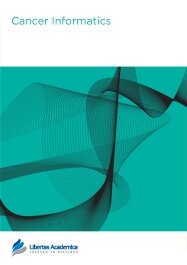

Publication Date: 14 Mar 2011
Type: Original Research
Journal: Cancer Informatics
Citation: Cancer Informatics 2011:10 45-64
doi: 10.4137/CIN.S6438

The reproducibility of mass spectrometry (MS) data collected using surface enhanced laser desorption/ionization-time of flight (SELDI-TOF) has been questioned. This investigation was designed to test the reproducibility of SELDI data collected over time by multiple users and instruments. Five laboratories prepared arrays once every week for six weeks. Spectra were collected on separate instruments in the individual laboratories. Additionally, all of the arrays produced each week were rescanned on a single instrument in one laboratory. Lab-to-lab and array-to-array variability in alignment parameters were larger than the variability attributable to running samples during different weeks. The coefficient of variance (CV) in spectrum intensity ranged from 25% at baseline, to 80% in the matrix noise region, to about 50% during the exponential drop from the maximum matrix noise. Before normalization, the median CV of the peak heights was 72% and reduced to about 20% after normalization. Additionally, for the spectra from a common instrument, the CV ranged from 5% at baseline, to 50% in the matrix noise region, to 20% during the drop from the maximum matrix noise. Normalization reduced the variability in peak heights to about 18%. With proper processing methods, SELDI instruments produce spectra containing large numbers of reproducibly located peaks, with consistent heights.
PDF (5.77 MB PDF FORMAT)
RIS citation (ENDNOTE, REFERENCE MANAGER, PROCITE, REFWORKS)
BibTex citation (BIBDESK, LATEX)
XML
PMC HTML

I would like to extend my gratitude for creating the next generation of a scientific journal -- the science journal of tomorrow. The entire process bespoke of exceptional efficiency, celerity, professionalism, competency, and service.

All authors are surveyed after their articles are published. Authors are asked to rate their experience in a variety of areas, and their responses help us to monitor our performance. Presented here are their responses in some key areas. No 'poor' or 'very poor' responses were received; these are represented in the 'other' category.See Our Results
Copyright © 2014 Libertas Academica Ltd (except open access articles and accompanying metadata and supplementary files.)
Facebook Google+ Twitter
Pinterest Tumblr YouTube